Autonomous driving companies race to enter the low-speed unmanned vehicle sector: Is the Time Right?
In the field of intelligent driving, a new race is quietly unfolding.
On September 2nd, Desay SV officially launched its new brand "Chuanxing Zhiyuan," which focuses on low-speed unmanned vehicles, and introduced its first automotive-grade platform product, the S6 series. On September 15th, Youjia Innovation unveiled its unmanned logistics brand "Xiaozhu Unmanned Vehicle," marking another evolution from L1 to L4 and bringing a new automotive-grade unmanned logistics product to the industry.
Expanding the perspective further, "the world's first Robotaxi stock" WeRide is also extending its business into the field of autonomous logistics vehicles. On June 27th, WeRide received the first batch of road test licenses for autonomous driving equipment in Huangpu District, Guangzhou. Its autonomous logistics vehicle, the Robovan W5, has already started road testing across the entire Huangpu District.
From manned to cargo, from high-speed scenarios to medium and low-speed scenarios, the business boundaries of intelligent driving companies are continuously expanding. What attracts them to enter the low-speed unmanned vehicle track? The reasons lie not only in the urgent need for cost reduction and efficiency improvement in the logistics industry, but also in the development opportunities brought by technological maturity and favorable policies.
When the passenger car sector is mired in homogeneous competition over "assisted driving," the low-speed unmanned vehicle sector has achieved a "year-on-year doubling" in sales, spearheading a "second growth curve" in closed scenarios such as express delivery and sanitation. Behind this is the deep reconstruction of technology, scenarios, and commercial logic.
As more and more players join the fray, competition in the field is becoming increasingly intense. Can intelligent driving companies find their own path in this new blue ocean?
Why are smart driving companies targeting low-speed autonomous vehicles?
Since the beginning of this year, there has been a continuous stream of news about intelligent driving companies expanding into the low-speed autonomous vehicle sector.
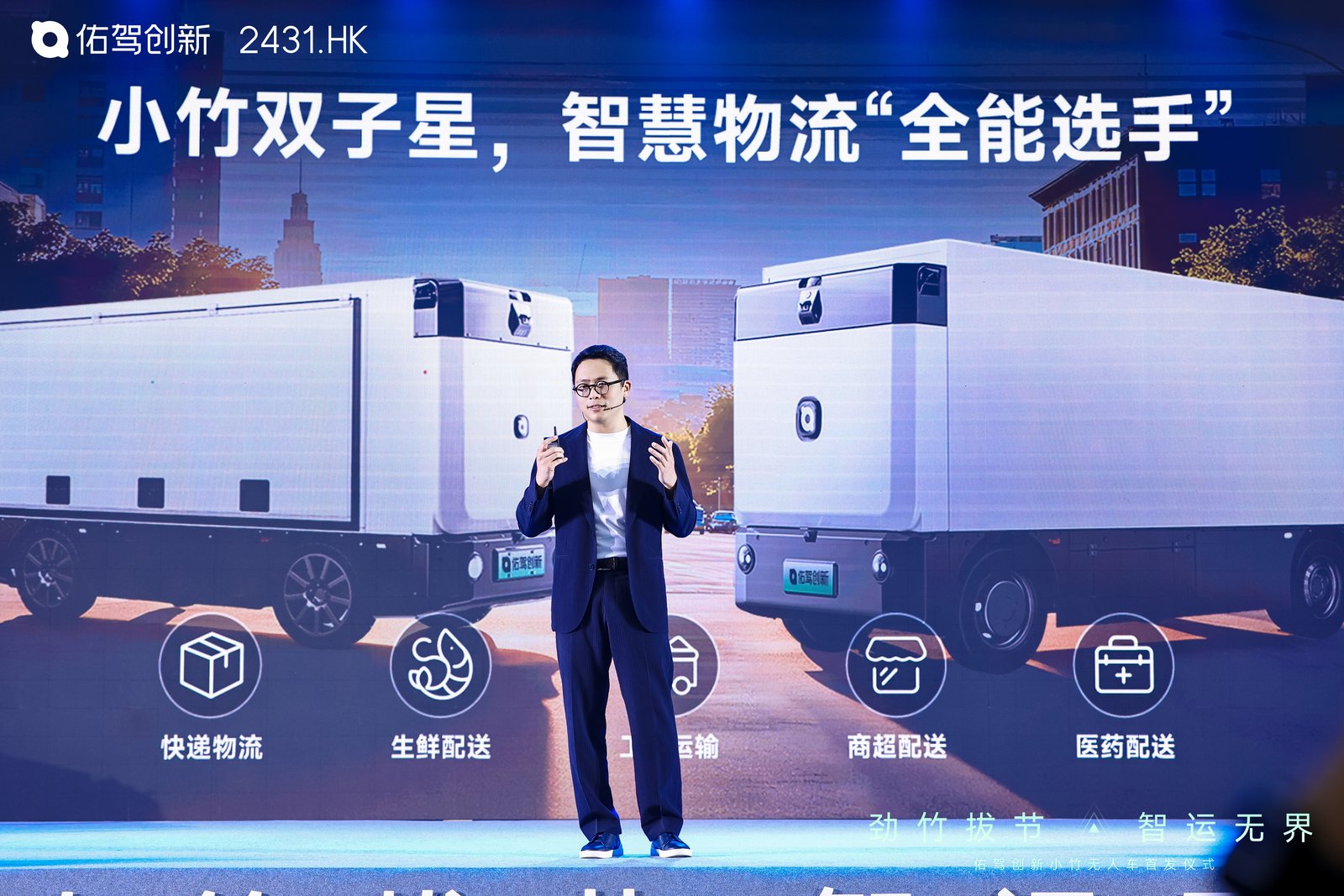
Image Source: Youjia Innovation
On September 2nd, Desay SV officially launched its low-speed unmanned vehicle brand "Chuanxing Zhiyuan," debuting two models: the S6 Wing Edition and the S6 Side Sliding Door Edition, announcing that this leader in cockpits and intelligent driving has officially entered the last-mile logistics track.
After the debut of Youjia Innovation's Xiao Zhu autonomous vehicles T5 and T8, they attracted significant industry attention. The first model of the Xiao Zhu autonomous vehicle, the T5, has an optimized cargo space that allows for a volume of 5.5m³ and achieves the largest load capacity in its class at 1000kg, with a maximum range of 180km. It mainly serves specific scenarios such as express delivery urban distribution, supermarket retail, and fresh produce delivery.
The T8 has a capacity of 8.5 cubic meters, meeting the needs of high-volume transportation with a maximum load of 1700 kg and a maximum range of 240 km. It can be widely used in urban distribution and industrial logistics and can also be applied to more specialized scenarios such as mining areas and ports.
Despite the product release not being early, Udriver Innovation's expansion in the logistics sector has never ceased. On September 3rd, the company officially reached a framework cooperation agreement with the Shenzhen Branch of China Post Group Corporation (Shenzhen Post) and Shenzhen Eastern Public Transportation Co., Ltd. (Eastern Public Transport).
Tripartite collaboration will integrate innovative public transportation networks with urban delivery systems, establishing an intensive and efficient urban freight application system. This will effectively reduce transportation costs for enterprises and explore the application of unmanned logistics scenarios in urban environments.
In February 2025, WeRide released the W5 unmanned logistics vehicle. Four months later, it had achieved full road test coverage in two districts of Guangzhou, demonstrating the potential of autonomous driving technology in the logistics industry.
WeRide's goal is also very clear. Global smart logistics is entering a period of rapid development, with a new multi-trillion-dollar blue ocean quickly emerging. WeRide will steer ahead in this commercial blue ocean.
Industry insiders believe that the reason autonomous driving companies are focusing on low-speed unmanned vehicles is partly based on the judgment of industry trends and partly due to the need for their own business expansion.
"The breakthrough point in the smart mobility sector over the next decade will occur in the 'capillaries' of cities, namely the last few kilometers of logistics, sanitation, and delivery services, which are facing a significant increase in efficiency and intelligent transformation," said Gao Dapeng, Chairman of Desay SV Automotive.
In fact, in recent years, with the rapid development of e-commerce, courier, and other industries, the demand for logistics and delivery has continued to grow. Meanwhile, rising labor costs and driver shortages have made the need for unmanned delivery increasingly urgent for logistics companies.
According to industry estimates, last-mile delivery costs account for about 30% of the total logistics cost, with labor expenses making up more than 60%. During the "618" shopping festival in 2025, more than 40 unmanned vehicles from Meituan, JD.com, and SF Express will be deployed for peak joint adjustments at the Grand Logistics Industrial Park in Pingshan, Shenzhen. SF Express revealed that the overall delivery efficiency of its unmanned fleet increased by about 30% during peak periods. Industry case studies indicate that the cost of the last-mile shuttle segment can be reduced by up to 40%.
Gao Dapeng said bluntly: "The capillary network in the last three kilometers is the scenario where intelligent driving is most likely to generate commercial value."
In this context, the emergence of unmanned delivery vehicles offers a new solution for the logistics industry. By introducing unmanned delivery vehicles, logistics companies can effectively reduce labor costs, improve delivery efficiency, and minimize safety risks associated with human factors.
"Taking express delivery as an example, unmanned delivery vehicles can operate 24 hours a day without interruption, and their delivery efficiency is much higher than that of manual delivery," pointed out logistics industry analyst Peng Chuang (pseudonym). "In addition, unmanned delivery vehicles can also use intelligent dispatch systems to achieve optimal route planning, further improving delivery efficiency."
Besides the driving force of market demand, an important reason for intelligent driving companies to venture into the low-speed autonomous vehicle sector is to acquire more scenario data, which in turn enhances the assisted driving algorithms.
In the field of passenger car assisted driving, companies face high costs in obtaining comprehensive, high-granularity real-world road data due to constraints such as data compliance, privacy protection, and functional safety. In contrast, low-speed autonomous vehicles primarily operate in closed or semi-closed campuses, where the traffic participants are simpler, vehicle speeds are lower, and there are fewer regulatory restrictions. This allows manufacturers to collect multi-scenario data at a lower cost, providing data support for algorithm iteration.
Can the technological advantages of intelligent driving companies be replicated?
Compared to traditional autonomous vehicle companies, smart driving companies are often considered to have certain technical advantages when entering the low-speed autonomous vehicle track.
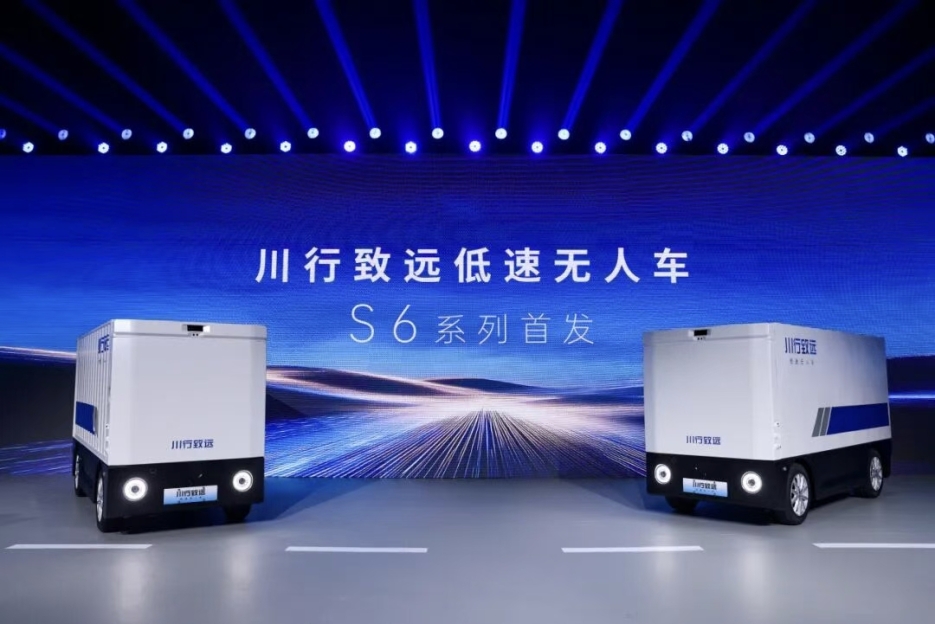
Image source: Desay SV
For example, Desay SV, as a company deeply engaged in the fields of intelligent cockpits, intelligent driving, and connected services for many years, has a profound technical accumulation in sensors, controllers, and algorithms.
According to Desay SV Vice President and General Manager of Chuanxing Zhiyuan, Chen Junfeng, the Chuanxing Zhiyuan S6 series products have achieved the industry debut of six innovative technologies, including full vehicle-grade development, intelligent axial control system, maximum climbing capacity of 25%, 6-year 30-kilometer battery, full vehicle-grade intelligent driving suite, and full vehicle intelligent sensing skin.
The application of these technologies not only enhances the performance and reliability of the products but also provides users with a safer and more efficient experience.
Similarly, UDrive Innovation also has a wealth of technical reserves in the field of assisted driving. The company has publicly stated that its technological path is to gradually evolve from L2+ level assisted driving to L4 level autonomous driving. The substantial technical experience and data accumulated during this process are of significant reference value for the development of unmanned logistics vehicles.
Youjia Innovation further stated that the urban scenarios for pre-installed assisted driving naturally overlap with the use cases for unmanned logistics, such as point-to-point fixed route driving functions.
Yujia Innovation has extracted classic long-tail scenarios from the vast amount of data accumulated in the pre-installation mass production business and carried out targeted algorithm optimization for unmanned logistics scenarios. This has helped Xiaozhu Unmanned Vehicles rapidly develop core capabilities such as handling public roads, navigating complex road conditions, autonomously cruising in indoor and outdoor parks, automatic parking in work zones, and active safety.
However, some industry insiders have pointed out that although intelligent driving companies have certain advantages in technology, there are still significant differences between low-speed unmanned vehicles and passenger car assisted driving in terms of application scenarios and technical requirements. Whether the technological advantages of intelligent driving companies can be fully replicated in the low-speed unmanned vehicle field remains to be seen.
Low-speed unmanned vehicles are mainly used in closed or semi-closed environments, where the driving speed is relatively low. However, they require more stringent demands on load capacity, endurance, and adaptability to complex environments such as rain, snow, fog, narrow dirt roads, and gate passages. In logistics and distribution scenarios, they also need to be deeply coordinated with WMS/TMS, cloud scheduling, loading and unloading automation, and other processes, posing a greater challenge to the system integration capabilities of enterprises.
Furthermore, cost control for low-speed unmanned vehicles is also a key issue. For example, the unmanned vehicle companies Neolithic and Jushu Intelligent have reduced the price of unmanned urban delivery vehicles to the ten thousand yuan level, with Jushu Intelligent's lowest base vehicle price even dropping to 19,800 yuan.
In the logistics industry, where there is a high sensitivity to costs, effectively reducing product costs while ensuring product performance is a crucial issue that autonomous driving companies need to address upon entering the low-speed unmanned vehicle market. In terms of cost control, it is worth the industry's anticipation to see how autonomous driving companies can enhance product cost-effectiveness through technological innovation, as well as reduce costs through mass production and supply chain optimization.
As the competition in the track intensifies, what are the odds of success for intelligent driving companies?
With intelligent driving companies entering the field one after another, competition in the low-speed unmanned vehicle sector is becoming increasingly intense.
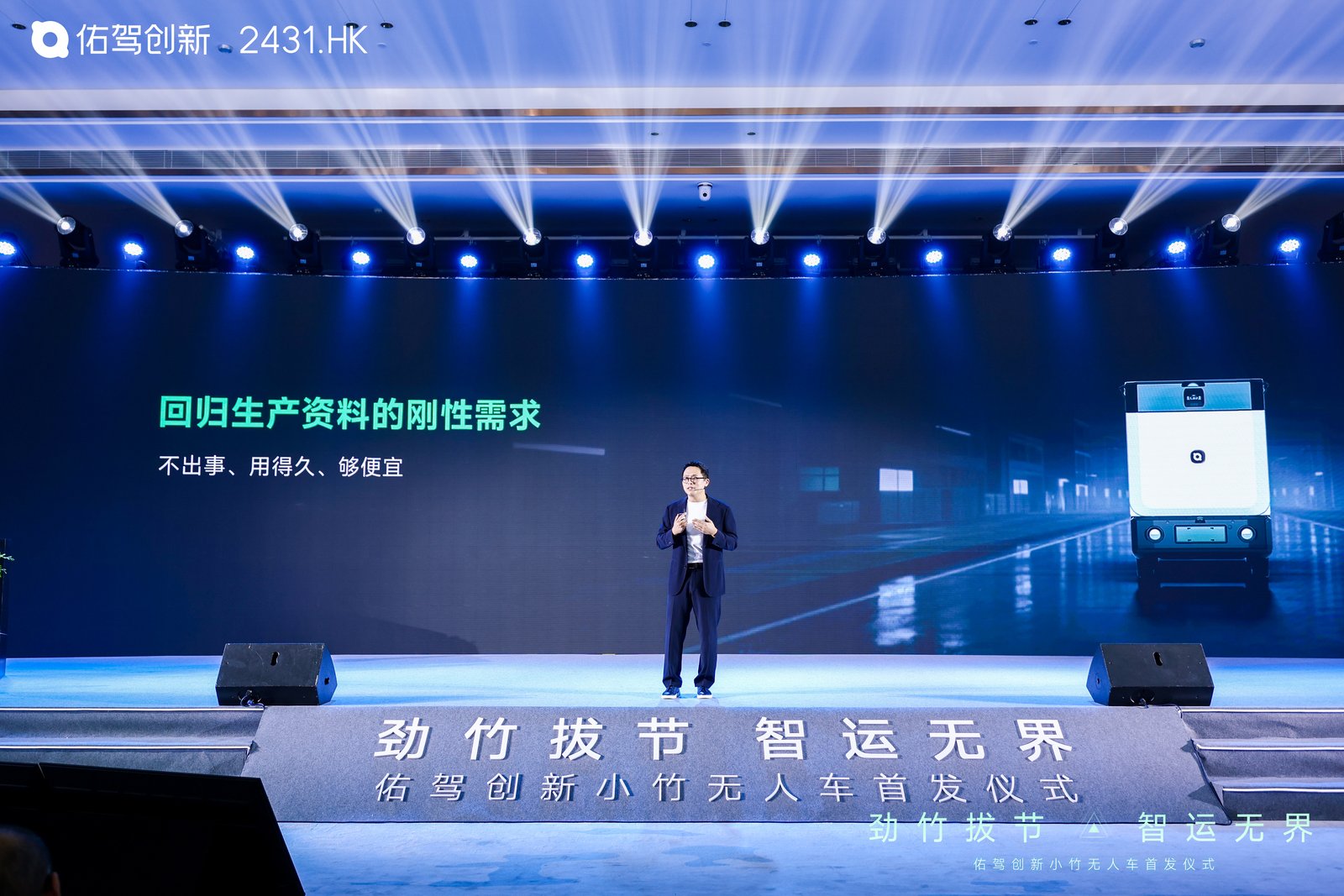
Image source: Youjia Innovation
According to incomplete statistics, there are currently dozens of companies involved in the low-speed unmanned vehicle field in China. These include companies focused on unmanned vehicle research and manufacturing, such as Neolithic, White Rhino, and Deep Robotics, as well as e-commerce and delivery platforms like Cainiao, JD.com, and Meituan, and logistics companies such as SF Express and China Post.
Driven by market demand, the market size of low-speed unmanned vehicles is growing rapidly. According to statistics from the Low-Speed Unmanned Driving Industry Alliance, the sales scale of China's low-speed unmanned driving industry will reach 12.3 billion yuan in 2024, a year-on-year increase of 45%; the sales volume of various types of vehicles will be approximately 33,000 units, a year-on-year increase of 34%.
The report predicts that sales will exceed 47,000 units in 2025, with sales revenue reaching 18.5 billion yuan; by 2030, sales are expected to reach 95,000 units, with sales revenue surpassing 41 billion yuan.
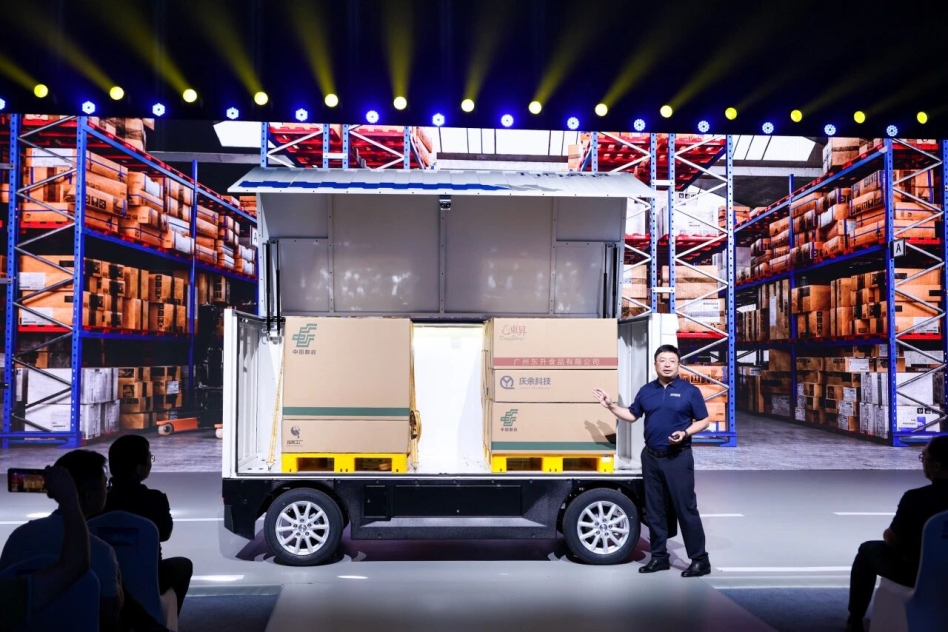
Image source: Desay SV
In the face of such intense market competition, what are the odds of success for smart driving companies?
In the view of industry insiders, intelligent driving companies have certain advantages in technology research and development, supply chain management, and brand influence. These advantages will help them gain a share in the low-speed unmanned vehicle market.
The technological experience and research capabilities accumulated by intelligent driving companies in the field of smart driving are important competitive advantages for them to enter the low-speed unmanned vehicle track. By applying these technologies to low-speed unmanned vehicle products, the level of intelligence and performance of the products can be effectively enhanced.
At the same time, the supply chain management systems established by intelligent driving companies through long-term cooperation with automakers can also provide strong support for the production and manufacturing of low-speed unmanned vehicles. "In terms of supply chain management, intelligent driving companies can better control product quality and costs, ensuring the stable supply of products," analyst Peng Chuang pointed out.
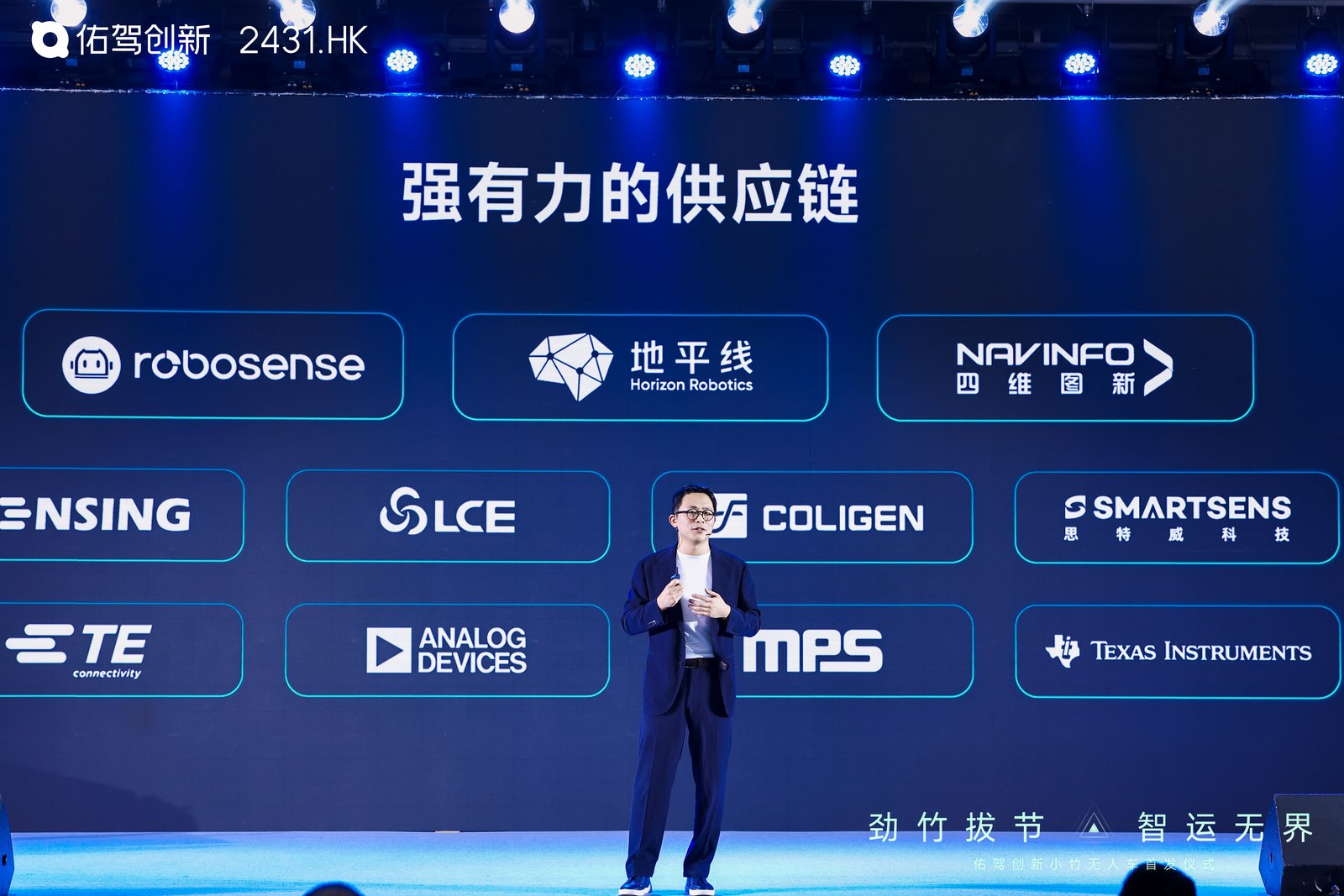
Image source: Youjia Innovation
In addition, the brand influence that intelligent driving companies have accumulated in the passenger car market also helps them quickly enter the low-speed unmanned vehicle market. Peng Chuang believes that "for logistics companies and users, choosing products from well-known brands is often more reliable. The brand endorsement of intelligent driving companies can reduce users' selection costs and usage risks."
However, for intelligent driving companies to succeed in the low-speed unmanned vehicle track, they need to overcome many challenges. In addition to the aforementioned issues of scenario adaptation and cost control, the uncertainty of policies and regulations is also an important factor.
Currently, more than 20 cities, including Beijing, Shanghai, Shenzhen, Hangzhou, and Foshan, have introduced regulations for road testing and demonstration applications of low-speed unmanned vehicles, granting vehicle codes and conditional road rights. However, low-speed unmanned vehicles still fall outside the binary structure of "motor vehicles-non-motor vehicles" defined by the "Road Traffic Safety Law." Core issues such as vehicle attributes, license registration, accident liability, and insurance liability lack unified regulations, which is the primary factor restricting large-scale commercial deployment.
The improvement of policies and regulations is crucial for the development of the low-speed unmanned vehicle industry. Only with the support of policies and regulations can companies invest in research and production with greater confidence, allowing the market to achieve healthy and orderly development.
Heroic Summary
Behind the phenomenon of intelligent driving companies entering the low-speed unmanned vehicle track, we see a deep integration of technological innovation and market demand. The logistics industry's strong demand for cost reduction and efficiency improvement provides a wide application space for low-speed unmanned vehicles. Intelligent driving companies' deep accumulation in technology research and development injects new vitality into this field.
Competition in the industry has always been brutal. In this seemingly opportunity-filled new blue ocean, intelligent driving companies possess advantages in technology and supply chains, but they also face numerous challenges such as scenario adaptation, cost control, and regulations.
Standing at the threshold of 2025 and looking back, the low-speed autonomous vehicle sector has transitioned from the "technology verification phase" to the "commercialization decisive phase." As companies like Desay SV and UDrive Innovation redefine the industry with automotive-grade standards, ecological thinking, and model innovation, this intelligent revolution happening in the "capillaries" of cities may be nurturing the next trillion-dollar market.
【Copyright and Disclaimer】The above information is collected and organized by PlastMatch. The copyright belongs to the original author. This article is reprinted for the purpose of providing more information, and it does not imply that PlastMatch endorses the views expressed in the article or guarantees its accuracy. If there are any errors in the source attribution or if your legitimate rights have been infringed, please contact us, and we will promptly correct or remove the content. If other media, websites, or individuals use the aforementioned content, they must clearly indicate the original source and origin of the work and assume legal responsibility on their own.
Most Popular
-

List Released! Mexico Announces 50% Tariff On 1,371 China Product Categories
-

EU Changes ELV Regulation Again: Recycled Plastic Content Dispute and Exclusion of Bio-Based Plastics
-

Mexico officially imposes tariffs on 1,400 chinese products, with rates up to 50%
-

Clariant Unveils Cost-Cutting Plan Details, Plans to Shut Down Multiple Plants
-

Nissan Cuts Production of New Leaf EV in Half Due to Battery Shortage






